Advertisement
Irene Tan combined her love for cycling with a desire to honour her grandfather’s birthplace in Indonesia by riding solo from Singapore to Sumatra. She recounts her three-week adventure last year, the challenges she faced, and the unlikely friends she made along the way.
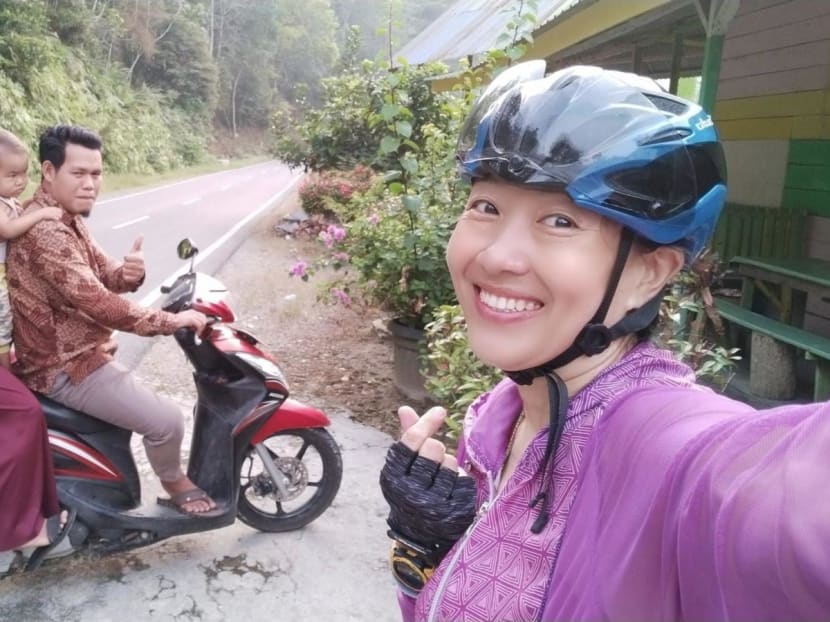
Irene Tan (right) with the locals she befriended during her solo cycling journey in Indonesia. (Photo: Irene Tan)
New: You can now listen to articles. 
Sorry, the audio is unavailable right now. Please try again later.
This audio is AI-generated.

02 Jun 2024 08:26AM
Irene Tan is an early childhood educator with a huge passion for cycling and history. Last year, the 50-year-old combined these two passions on a solo cycling trip from Singapore. Her mission: To rediscover her roots and discover her grandfather’s birthplace in Bagansiapiapi and continue all the way to the northernmost tip of Indonesia. She tells CNA Women’s Izza Haziqah how she did it.
Ten years ago, I was extremely unfit and unadventurous. I was then 40, and I tried many ways to stay healthy and active, but very few lasted – until I discovered cycling.
I started by taking part in a recreational cycling trip in Taiwan in 2014, and it made me feel so free and energised. I fell in love with the sport.
Before long, I joined local cycling clubs and befriended enthusiasts who shared tips on how to choose the best cycling routes in Singapore and what to do in an emergency if you’re alone on an empty road.
But even as I gained confidence in cycling, I considered myself unadventurous and “safe”. I preferred familiar routes and even if I were to venture off the beaten path or take my bike overseas, I did so with a group of fellow cyclists or to places where I could understand the language.
In 2023, the year I turned 49, I developed a thirst for adventure.
AN ADVENTURE TO DISCOVER ONE’S HERITAGE

My late paternal grandfather was born in Bagansiapiapi, on the east coast of Sumatra, Indonesia. Growing up, I’d hear all sorts of stories about his childhood before he moved to Singapore around World War II.
The snippets I heard fascinated me so much that I read whatever I could find on the internet about the Chinese families who lived in Sumatra in the early 1900s.
I also asked my extended family about what our family was like in Indonesia, and I discovered all sorts of things.
My great-grandparents were originally from China and settled in Indonesia. They were fluent in both Bahasa Indonesia and the Hokkien dialect. Their main source of income came from the rubber plantation they owned, in addition to fishing.
All these stories made me want to visit the area but I never acted on it until it hit me one day: What if I cycled solo from Singapore to Sumatra to visit my grandfather’s place of birth?
The idea grew in my mind and I became excited every time I thought about it.
I knew I had to make it happen. And I decided to go big – since I was going to be in Sumatra, why not make the whole journey across the island and head to the northernmost tip of Indonesia on Sabang Island, in Aceh?
When I told my friends about my plan to cycle solo from Singapore to Aceh, as expected, they were worried.
They asked me: “Why not just stick to Malaysia? You don’t know Bahasa Indonesia, what if you get lost? Do you even know what’s in Sumatra? You’re a small Asian woman, who knows what could happen?”
I took note of their concerns but I still felt it was an important adventure to embark on. No one else I knew had done it, but I wanted to give it a go.
PREPARING FOR THE RIDE TO ACEH
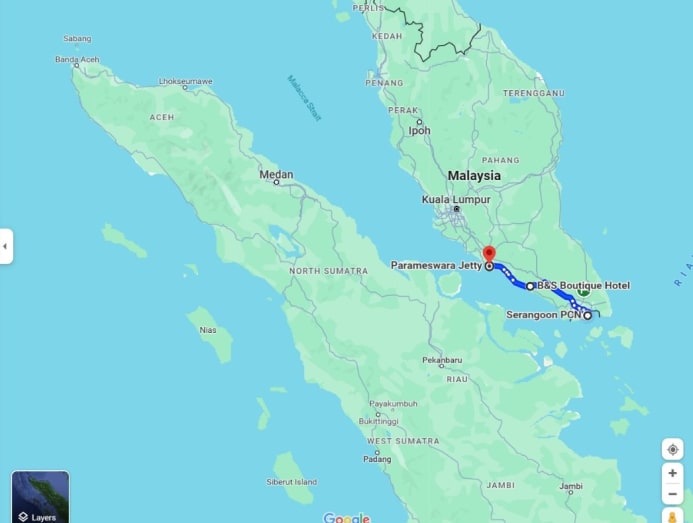
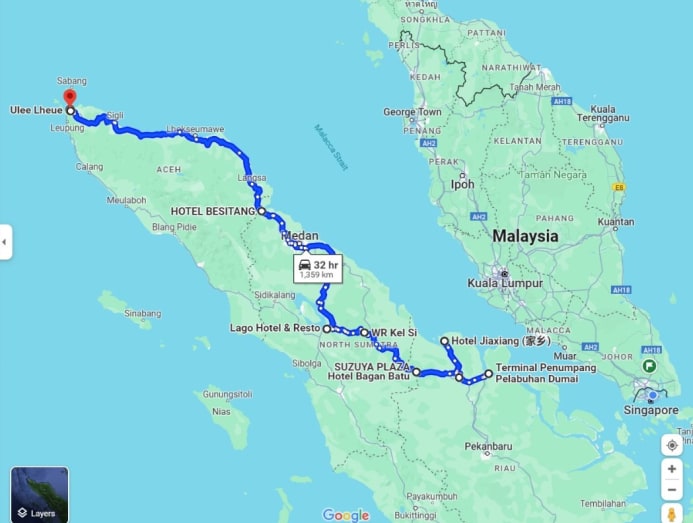
As it was my first solo ride around Indonesia, I made sure I planned it well. I took a month off work in September and October 2023 to give myself three weeks for my one-way cycling trip from Singapore to Aceh. My plan was to fly home from Aceh via Kuala Lumpur, Malaysia.
I brushed up on my very basic Malay and Bahasa Indonesia and mapped out multiple routes on Google Maps – the trusty app worked wonders – as my Plans A, B and C.
The cycling journey was divided into five main legs:
- Singapore to Malacca, Malaysia (250km), where I would catch a ferry from Parameswara Jetty to Dumai, Sumatra, Indonesia (120km)
- Dumai to Bagansiapiapi (120km)
- Bagansiapiapi to Lake Toba, a vast lake surrounding an active but dormant volcano (530km)
- Lake Toba to Medan, the capital of North Sumatra (120km)
- Medan to Aceh (450km), where I would board a ferry to Sabang Island and then cycle to the northernmost tip of Indonesia (40km)
My entire trip would cover more than 1,600km. I aimed to cycle around 100km to 140km a day, which would take about four to six hours.
I had to leave room for flexibility. I had to account for possible bicycle breakdowns, accidents, or even if I was just feeling extra tired on that day.
So while I booked most of my accommodation in advance, I took note of a few potential hostels and other accommodations that would accept last-minute stays, in case I needed the rest.
I also packed light. One bag for clothes and another for vitamins, bike tools, water bottles, and a bit of extra space for souvenirs.
Knowing I would pass through villages and areas with weak signal connections or no WiFi, I also purchased local SIM cards and identified small shops along the way where I could buy phone credits for international calls.
CYCLING AS AN ADVENTURE OF SELF-DISCOVERY
The journey was exhilarating. During the first leg that brought me from Singapore to Indonesia, I barely felt tired because I was so driven by my excitement.
When I reached Bagansiapiapi, I didn’t hesitate to ask the locals about the city’s history relating to the large Chinese community there. Getting around wasn’t too difficult because most people there are Chinese, and Hokkien is commonly spoken.
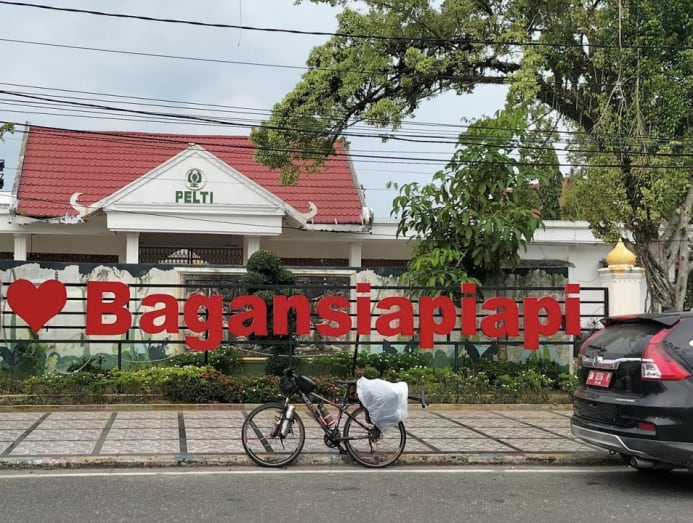
I discovered that Bagansiapiapi was originally populated by mainly Chinese immigrants who came to Indonesia in the late 18th and early 19th centuries.
Unfortunately, I couldn’t find or identify my great-grandfather’s name but I was so excited to see a street named after another Chinese family, also Tan. I found out that they, too, owned a rubber plantation.
Locals recalled a Chinese family who used to stay in Bagansiapiapi in the 1920s until the 1940s when they migrated to another part of Southeast Asia.
They couldn’t recall the name and I couldn’t find any written documents so I wasn’t 100 per cent sure that it was my grandfather. Nonetheless, the possibility left me feeling excited and fulfilled.
All the small pieces of my history I found reminded me of the sacrifices and hard work of my paternal ancestors to find a better life for their descendants.
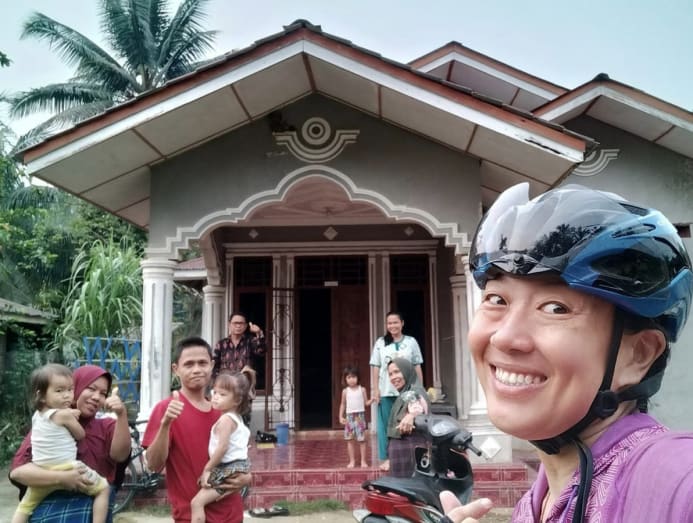
Beyond Bagansiapiapi, the solo trip allowed me to make friends in the most unexpected places.
I got lost while cycling towards Lake Toba. I nearly rode into a forest as it looked like a small shortcut to Lake Toba on the map, but before I could go in, a family of three – a woman named Midah, her husband and her child – passed by me on their scooter and stopped me.
Thank God they did, because who knows what would have happened to me in the forest.
Midah and her family graciously welcomed me into their home for the night. I shared dinner and breakfast with her family, washed my clothes, restocked my food and drink supplies, and made the necessary adjustments to my bike.
I’ll always be thankful to them for taking care of me when I was lost. We didn’t always understand each other’s language but we shared a warmth that I will never forget.
The next day, the family even accompanied me on their scooter for 15km as I cycled. They didn’t leave until they were sure I understood the directions leading to Lake Toba, even with the language barrier. We hugged and exchanged numbers. I still occasionally text Midah via WhatsApp.
My cycling journey was not without challenges. There were no major accidents or breakdowns, but there were a few times when I was verbally and physically harassed by men.
During these incidents, I was too shocked to react as they happened while I was cycling, and the perpetrators disappeared quickly. I had to stop by the roadside to regain my composure.
When I was on my way to Lake Toba, a motorcycle slowed down next to me as I was cycling and one of the men on it touched my thigh. Another incident happened on Sabang Island: a group of men wolf-whistled and called to me when I was cycling.
Thankfully, other local men checked to see if I was okay.
For example, after I stopped by the road to process the first incident, a driver who had witnessed what happened pulled over and asked if I was alright. He even gave me a bottle of water, which made me feel much more at ease.

When I finally reached Monument 0km, the northernmost tip of Indonesia on Sabang Island, I could hardly believe it. I kept thinking, ‘Wow, I actually did it!’. It was an unforgettable experience, and at the end of the 1,630km journey, I felt like my legs were about to fall off.
After a few days of exploring Aceh, I flew back to Singapore from Aceh via Kuala Lumpur – noting all my unique experiences on my phone, and being thankful that I could witness the land where my grandparents came from.
If I were to tell my younger self that at 49 years old, she would be a fit cyclist who rode solo from Singapore to Indonesia as a heritage adventure dedicated to her grandfather, I’m sure she would laugh at me – but I did it.
It was an awesome adventure and I’m so proud of myself for making it happen.
CNA Women is a section on CNA Lifestyle that seeks to inform, empower and inspire the modern woman. If you have women-related news, issues and ideas to share with us, email CNAWomen [at] mediacorp.com.sg.

